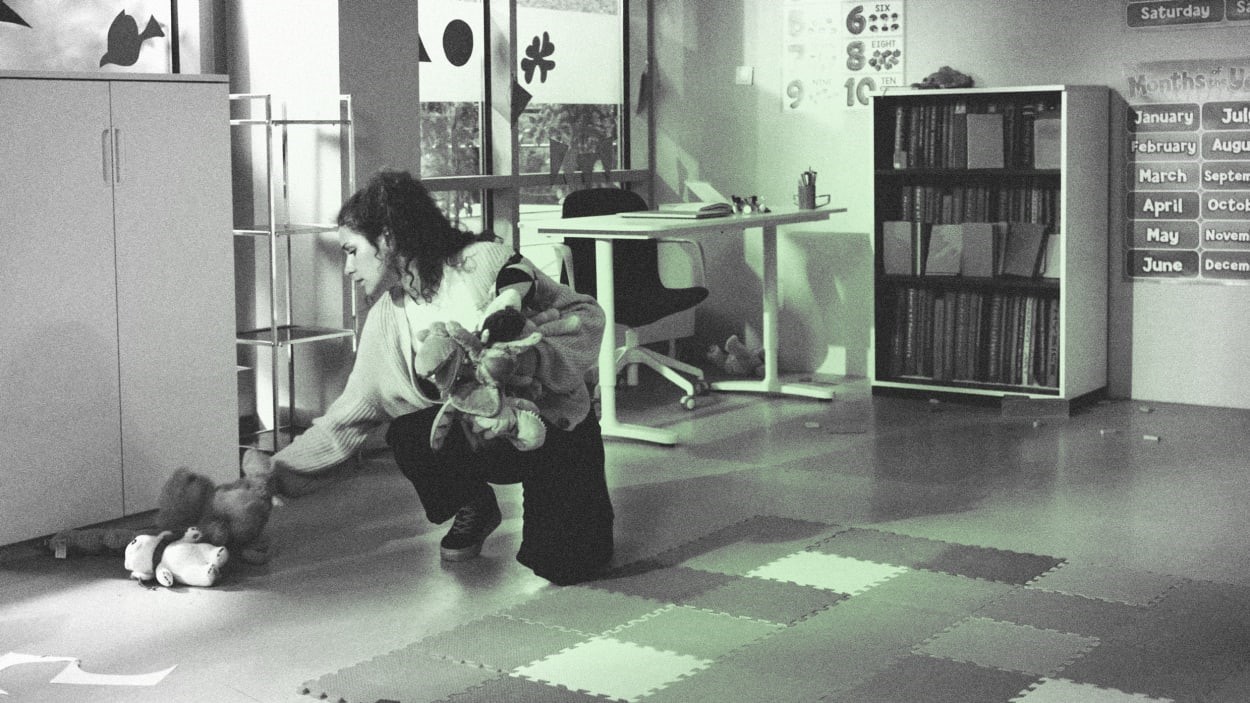Why the childcare industry isn’t unionized
In the summer of 2020, at the height of the pandemic, about 45,000 home-based childcare workers across California voted overwhelmingly in favor of forming Child Care Providers United. Reportedly the largest union election in two decades, it was 17 years in the making, the result of advocates urging lawmakers and politicians to grant bargaining rights to childcare workers.
The CCPU union—a joint effort among local chapters of the Service Employees International Union and the American Federation of State, County and Municipal Employees—also marked a significant labor action in a sector that has long been difficult to crack, in stark contrast to the robust union representation that teachers enjoy. At a moment when workers across industries are mounting high-profile union drives and going on strike, the childcare industry has seemingly remained out of reach for many organizers, even as the pandemic shined a light on the myriad challenges faced by people in those jobs.
Low pay and high turnover
“It’s very, very difficult for low-wage workers to organize,” says Sharon Block, executive director of Harvard Law School’s Center for Labor and a Just Economy. “One, it just takes time. And [for] people who are low-wage workers, time is a luxury that most of them don’t have—because they need to be working all the time in order to support themselves.”
But even compared to other low-wage sectors—where workers have seen major union wins at companies like Starbucks and Amazon—the precarious nature of the childcare industry presents unique challenges. Childcare workers aren’t just poorly compensated; they’re among the lowest-paid workers in the U.S.
As of 2021, childcare workers were making just $13.51 an hour, reportedly half of what the average worker in the U.S. earns, according to the Economic Policy Institute. Another report by the Center for American Progress found that when adjusted for inflation, wages for childcare workers had actually gone down 6.5% between 2012 and 2019. Hiring and retention has always been an issue in childcare centers, but the pandemic thrust the industry into a staffing crisis as its workers were lured away by jobs with better pay and benefits.
“You see a lot of turnover in childcare,” says Cathy Creighton, director of Cornell University’s Industrial and Labor Relations Buffalo Co-Lab. “When there’s a lot of turnover and wages are really low, even though you might need a union more than ever, it’s difficult for the workers to sort of band together to form a union [and] get that solidarity.”
Small businesses and a lack of public investment
It’s exactly this dynamic that helps explain why the childcare industry isn’t more unionized, coupled with a lack of public investment and the complexities of labor law. Since childcare is largely privatized in the U.S.—with the exception of pre-K programs that are publicly funded and subsidized services for low-income families—the industry is mostly composed of small businesses and home-based care centers (putting aside a handful of larger daycare chains operated by companies like Bright Horizons). Due to steep labor costs and strict staff-to-child ratios, most childcare providers are hardly in a position to be squeezed by activist employees.
“There [aren’t] a few big companies to strike against or to unionize against,” says Karen Schulman, director of state childcare policy at the National Women’s Law Center. “There are some bigger chains, but in many cases it might be a mom-and-pop shop [or] small business, so it’s hard to develop collective action against them. And it’s not like they’re making great profits. The margins are very small, so they’re paying as much as they can. . . . The [owners are] just barely scraping by.”
In the absence of sustained federal funding, there just isn’t enough money to go around without hiking up prices for families and making childcare even more unaffordable.
The privatization of childcare also means that many workers in this sector would have to organize under the National Labor Relations Act, rather than the state labor laws that typically govern how teachers unionize.
“It’s a statute that, at best, is very weak,” Block says of the National Labor Relations Act, which grants private-sector employees the right to organize but has been criticized for not having strong anti-retaliation protections. “It doesn’t really work for anybody, but it works particularly poorly for childcare workers in settings where there’s sometimes a fair amount of turnover, where workers are very vulnerable because they’re low wage; home-based workers [are] extremely isolated from other workers. For childcare workers, it’s essentially an obstacle to organizing.”
The most hurdles but the biggest need
And yet, as is the case with so many vulnerable workers, the very issues that make unionizing difficult are also why it can be so powerful. Since there’s so little unionization in the industry, when childcare workers do organize successfully—as they did for Child Care Providers United—it’s usually only a subset of workers who benefit. Since the CCPU was organized under state law, only family care providers were eligible to be classified as public employees and included in the union. As of this year, eleven states have granted family childcare providers the right to unionize, and all of those states have since inked agreements with their workers.
“It’s most often family childcare providers that are being organized,” says Brandy Jones Lawrence, senior analyst at the University of California, Berkeley’s Center for the Study of Child Care Employment. “While they’re excluded from formal shop-by-shop unionization—because they’re independent contractors—they are eligible for sector unionization. That’s been the most successful model for most of those states that have any kind of representation. [But] that leaves out all of the providers who work in these center-based settings.”
Childcare workers may never have the kind of union representation that teachers do, at least not without an overhaul of how the industry is currently funded. But the CCPU offers a glimmer of hope: Its latest collective bargaining agreement, which was approved by legislators and members earlier this year, secured an $80 million retirement fund, along with other benefits that will help providers keep their businesses running even if enrollment fluctuates. “The CCPU contract is a pretty amazing feat of public policy and advocacy,” Lawrence says.
States like Illinois and Connecticut have signed agreements with their family childcare providers as well, but Lawrence believes that alternative organizing structures could also prove effective under the right circumstances. She points to New Mexico, where a nonprofit group called Olé tried to organize childcare workers starting in 2010 but later pivoted to focus on policy advocacy for center-based childcare providers, even recruiting parents and families to their cause. Since then, Olé has secured increased reimbursements and subsidies for providers as well as parents.
“What they ended up doing is creating a nonprofit organization that almost serves as a quasi-union for the sector,” Lawrence says. “Its only task and focus is to address policy and legislative issues within the early care and education sector.” Still, she points out, it took more than a decade for the group to really effect change—and a progressive governor who made it a priority to invest in childcare and early childhood education.
Unions may not solve the fundamental issues with how the U.S. approaches early childhood education—as a nice to have, rather than a public good. But there are other benefits to activating workers in this space that transcend the specific wins that any one group might secure. A broader organizing movement across the childcare industry could certainly give workers more of a voice than they currently have and perhaps build an even stronger case for federal investment, especially now that providers have lost the federal funding that so many of them relied on in recent years.
“The Fight for $15 was funded by the labor movement, and that had nothing to do with unionization. It just [said] that the fast-food industry should not be [staffed by] people who are living on starvation wages,” Cornell University’s Creighton explains. Organizing “provides a structure around which advocacy can happen for the workers themselves.”
(49)



